Leichhardt tree, Canary Cheesewood
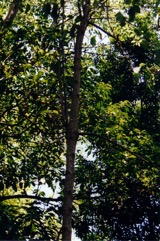
A tropical plant. It grows in warm temperate regions. It can grow in the tropics and subtropics. It does best in well-composted, well-drained soil. It needs an open sunny position. It is damaged by drought and frost. It can stand light frost. It is often along the edges of streams and swamps. It can tolerate occasional flooding. In Borneo it grows up to 100 m above sea level. In Indonesia it grows to 1,400 m above sea level. In Townsville palmetum. It suits hardiness zones 9-12.
Also known as:
Bulala, Gempol, Jampa, Kanluang, Kayu mas, Klepu pasir, Kolpo, Lanpayan, Ma-u, Ma-u-gyi, Ma-u-kadon, Nukli, Pohon bengkal, Prung, Tum kham
Synonyms
- Bancalus grandifolius (DC) O.K.
- Bancalus orientalis (L.) O.K.
- Cadamba nocturna Ham. ex Hensch.
- Cephalanthus foliis oppositis L.
- Cephalanthus orientalis L.
- Nauclea annamensis (Dub. & Eberh.) Merr.
- Nauclea coadunata Roxb. ex J. E. Smith
- Nauclea cordata Roxb.
- Nauclea elmeri Merr.
- Nauclea glaberrima Bartl.
- Nauclea grandifolia DC
- Nauclea leichhardtii F.v. M.
- Nauclea lutea Blanco
- Nauclea macrophylla Blume
- Nauclea minahassae Koord.-Schum.
- Nauclea roxburghii G. Don.
- Nauclea stipulacea Wall.
- Nauclea undulata Roxb.
- Nauclea wallichiana R. Br.
- Platanocarpum cordatum (Roxb.) Korth.
- Sarcocephalus annamensis Dub. & Eberh.
- Sarcocephalus buruensis Miq.
- Sarcocephalus coadunatus (Roxb. ex J. E. Smith) Druce
- Sarcocephalus cordatus (Roxb.) Miq.
- Sarcocephalus cordatus var. mollis Koord. & Valet.
- Sarcocephalus glaberrimus (Bartl.) Miq.
- Sarcocephalus macrocephalus K. Schum.
- Sarcocephalus orientalis (L.) Merr.
- Sarcocephalus ovatus Elmer
- Sarcocephalus papagola Domin.
- Sarcocephalus undulatus (Roxb.) Miq.
- Sarcocephalus undulatus var. buruensis (Miq.) Havil.
Edible Portion
- Fruit, Leaves
Where does Leichhardt tree grow?
Found in: Asia, Australia, Bangladesh, Cambodia, China, East Timor, Fiji, India, Indochina, Indonesia, Laos, Malaysia, Myanmar, Pacific, Papua New Guinea, PNG, Philippines, SE Asia, Sri Lanka, Thailand, Timor-Leste
Notes: The trees are used for making canoes. Fruit are high in Vitamin C. It has anticancer properties.
Growing Leichhardt tree, Canary Cheesewood
Cultivation: Plants are grown from fresh seed. They germinate in 2-4 weeks.
Edible Uses: The fruit are eaten. They are bitter. They have a strong smell and bitter, soft pulp. The young leaves are steamed and eaten with rice.
Production: It is fast growing.
Nutrition Info
per 100g edible portion| Edible Part | Energy (kcal) | Protein (g) | Iron (mg) | Vitamin A (ug) | Vitamin c (mg) | Zinc (mg) | % Water |
|---|---|---|---|---|---|---|---|
| Fruit | - | 0.8 | 0.6 | - | 11 | 0.7 | 77.3 |
Leichhardt tree, Canary Cheesewood Photos

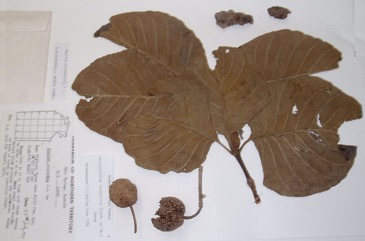
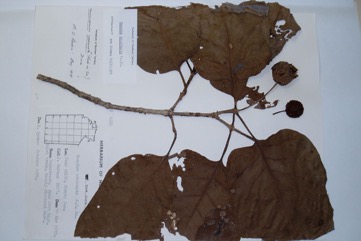
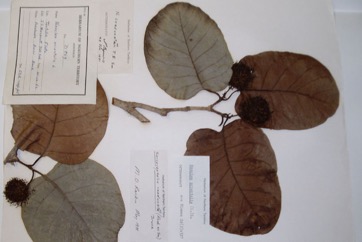
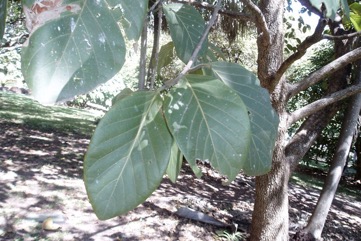
References
Ambasta, S.P. (Ed.), 2000, The Useful Plants of India. CSIR India. p 394
Anon., 2003, Native Plants for the Fitzroy basin. Society for Growing Australian Plants Inc. (Rockhampton Branch) p 68
Ashton, M. S., et al 1997, A Field Guide to the Common Trees and Shrubs of Sri Lanka. WHT Publications Ltd. pdf p 337
Barwick, M., 2004, Tropical and Subtropical Trees. A Worldwide Encyclopedic Guide. Thames and Hudson p 294
Bodkin, F., 1991, Encyclopedia Botanica. Cornstalk publishing, p 718
Borrell, O.W., 1989, An Annotated Checklist of the Flora of Kairiru Island, New Guinea. Marcellin College, Victoria Australia. p 125
Brock, J., 1993, Native Plants of Northern Australia, Reed. p 264
Calvert, G., 2010, The Burdekin Delta Tree Guide. Lower Burdekin Landcare Association., Inc., Ayr p 135
Cooper W & Cooper W T, 1994, Fruits of the Rain Forest. RD Press p 200
Cooper, W. and Cooper, W., 2004, Fruits of the Australian Tropical Rainforest. Nokomis Editions, Victoria, Australia. p 447
Cribb, A.B. & J.W., 1976, Wild Food in Australia, Fontana. p 57
Elliot, W.R., & Jones, D.L., 1997, Encyclopedia of Australian Plants suitable for cultivation. Vol 7. Lothian. p 3 (Photo & drawing)
Etherington, K., & Imwold, D., (Eds), 2001, Botanica's Trees & Shrubs. The illustrated A-Z of over 8500 trees and shrubs. Random House, Australia. p 490
Facciola, S., 1998, Cornucopia 2: a Source Book of Edible Plants. Kampong Publications, p 161
Hall, N. et al, 1972, The Use of Trees and Shrubs in the Dry Country of Australia, AGPS, Canberra. p 207 (As Sarcocephalus cordatus)
Havel, J.J., 1975, Forest Botany, Volume 3 Part 2 Botanical taxonomy. Papua New Guinea Department of Forests, p 287
Hearne, D.A., & Rance, S.J., 1975, Trees for Darwin and Northern Australia. AGPS, Canberra p 89 (As Nauclea coadunata)
Hibbert, M., 2002, The Aussie Plant Finder 2002, Florilegium. p 209
Hiddins, L., 1999, Explore Wild Australia with the Bush Tucker Man. Penguin Books/ABC Books. p 148
Jackes, B.R., 2001, Plants of the Tropics. Rainforest to Heath. An Identification Guide. James Cook University. p 77
Jones D, L, 1986, Ornamental Rainforest Plants in Australia, Reed Books, p 91, 340 (As Nauclea coadunata)
Kenneally, K.E., Edinger, D. C., and Willing T., 1996, Broome and Beyond, Plants and People of the Dampier Peninsula, Kimberley, Western Australia. Department of Conservation and Land Management. p 174
Kintzios, S. E., 2006, Terrestrial Plant-Derived Anticancer Agents and Plant Species Used in Anticancer research. Critical Reviews in Plant Sciences. 25: pp 79-113
Lazarides, M. & Hince, B., 1993, Handbook of Economic Plants of Australia, CSIRO. p 169
Llamas, K.A., 2003, Tropical Flowering Plants. Timber Press. p 330
Low, T., 1991, Wild Food Plants of Australia. Australian Nature FieldGuide, Angus & Robertson. p 60
Martin, F.W. & Ruberte, R.M., 1979, Edible Leaves of the Tropics. Antillian College Press, Mayaguez, Puerto Rico. p 217 (As Sarcocephalus orientalis)
Melzer, R. & Plumb, J., 2011, Plants of Capricornia. Belgamba, Rockhampton. p 296
Milson, J., 2000, Trees and Shrubs of north-west Queensland. DPI p 276
Molyneux, B. and Forrester, S., 1997, The Austraflora A-Z of Australian Plants. Reed. p 140
Nicholson, N & H., 1996, Australian Rainforest Plants, Terania Rainforest Publishing. NSW. p 48
Ochse, J. J. et al, 1931, Vegetables of the Dutch East Indies. Asher reprint. p 640 (As Sarcocephalus orientalis)
Paczkowska, G . & Chapman, A.R., 2000, The Western Australian Flora. A Descriptive Calatogue. Western Australian Herbarium. p 514
Pasha, M. K. & Uddin, S. B., 2019, Minor Edible Fruits of Bangladesh. Bangladesh J. Plant Taxon. 26(2): 299–313
Pearson, S. & A., 1992, Rainforest Plants of Eastern Australia. Kangaroo Press p 151
Petheram, R.J. and Kok, B., 2003, Plants of the Kimberley Region of Western Australia. UWA Press p 503
Radke, P & A, Sankowsky, G & N., 1993, Growing Australian Tropical Plants. Frith & Frith, Australia. p 49
Romanowski, N., 2007, Edible Water Gardens. Hyland House. p 110
Scarth-Johnson, V., 2000, National Treasures. Flowering Plants of Cooktown and Northern Australia. Vera Scarth-Johnson Gallery Association. Cooktown, Australia. p 120
Slik, F., www.asianplant.net
Smith, A.C., 1988, Flora Vitiensis Nova, Lawaii, Kuai, Hawaii, Volume 4 p 159
Smith, N. M., 1991, Ethnobotanical Field Notes from the Northern Territory, Australia, J. Adelaide Bot. Gard. 14(1): 1-65
Smith, Nicholas et al. 1993, Ngarinyman Ethnobotany: Aboriginal Plant Use from the Victoria River Area Northern Australia. Northern Territory Botanical Bulletin No 16. Parks and Wildlife Commission of the Northern Territory. p 35, 34.
Sp. pl. ed. 2, 1:243. 1762
Sosef, M. S. M., Hong, L. T., & Prawirohatmodjo, S. (Eds.), 1998, Timber tree: Lesser-known timbers. Plant Resources of South-East Asia, 5(3), p 392
Sukarya, D. G., (Ed.) 2013, 3,500 Plant Species of the Botanic Gardens of Indonesia. LIPI p 411
Tanaka,
Townsend, K., 1994, Across the Top. Gardening with Australian Plants in the tropics. Society for Growing Australian Plants, Townsville Branch Inc. p 302
Wheeler, J.R.(ed.), 1992, Flora of the Kimberley Region. CALM, Western Australian Herbarium, p 922
Wightman, Glenn et al. 1991.Alawa Ethnobotany: Aboriginal Plant Use from Minyerri, Northern Australia. Northern Territory Botanical Bulletin No 11. Parks and Wildlife Commission of the Northern Territory. p 21.
Wightman, G. & Andrews, M., 1991, Bush Tucker Identikit. Common Native Food Plants of Australia’s top end. Conservation Commission Northern Territory. p 16
Wightman, Glenn et al. 1992, Mangarrayi Ethnobotany: Aboriginal Plant Use from the Elsey Area Northern Australia. Northern Territory Botanical Bulletin No 15. Parks and Wildlife Commission of the Northern Territory. p 36.
Wightman, Glenn et al. 1994, Gurindji Ethnobotany: Aboriginal Plant Use from Daguragu Northern Australia. Northern Territory Botanical Bulletin No 18. Parks and Wildlife Commission of the Northern Territory. p 38, 39.
Wightman, G. & Brown, J., 1994, Jawoyn Plant Identikit, Common Useful Plants in the Katherine Area of Northern Australia. Conservation Commission Northern Territory. p 29
World Checklist of Useful Plant Species 2020. Royal Botanic Gardens, Kew
www.worldagroforestrycentre.org/treedb/